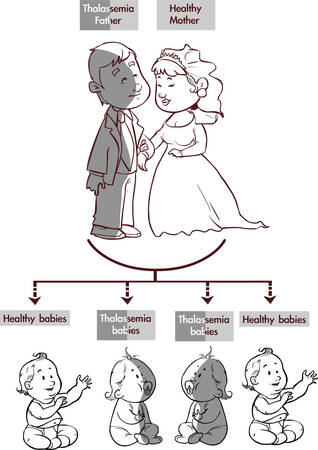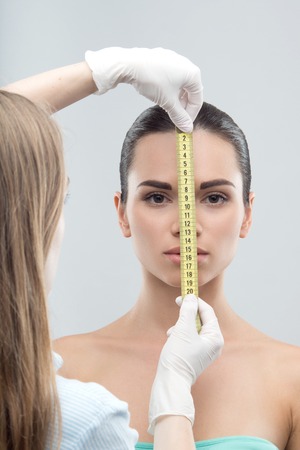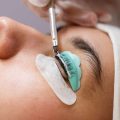Understanding Hormonal Changes Throughout Life
Hormones play a powerful role in shaping how our bodies look and feel, and the delicate skin around our eyes is no exception. As we go through different stages of life—from teenage years to adulthood and beyond—our hormone levels rise and fall, leading to visible changes that many Americans experience firsthand. Let’s break down the most common hormonal shifts and what they mean for your eye area.
Key Life Stages with Hormonal Fluctuations
| Life Stage | Main Hormones Involved | Typical Eye Area Changes |
|---|---|---|
| Puberty | Estrogen, Testosterone | Increased oil production, occasional puffiness or acne near the eyes |
| Pregnancy | Estrogen, Progesterone, hCG | Dark circles, fluid retention causing puffiness, sometimes skin sensitivity |
| Menopause | Decreased Estrogen, Increased Androgens | Dryness, thinning skin, more visible fine lines and wrinkles around the eyes |
| Chronic Stress | Cortisol (stress hormone) | Dark circles, dullness, slower skin repair leading to tired-looking eyes |
How These Changes Play Out in Everyday American Life
In the U.S., it’s common for teens to notice their first real skincare struggles during puberty, when hormones surge and oil glands work overtime. For women, pregnancy can bring unexpected puffiness or dark circles even if they’ve never had them before. Menopause often marks a turning point for mature women as estrogen drops, leaving the eye area drier and more fragile than ever. And let’s not forget stress—it’s practically a part of modern American life. High-pressure jobs, busy family schedules, and lack of sleep all boost cortisol levels, making under-eye bags and dark circles more pronounced.
The Takeaway: Why Eye Skin is So Sensitive to Hormones
The skin around your eyes is thinner and has fewer oil glands compared to the rest of your face. This makes it especially vulnerable when hormones shift—whether from age, lifestyle changes, or even short-term stress. Understanding these triggers is the first step toward finding solutions that really work for you.
2. Why the Skin Around Your Eyes Is Especially Sensitive
If you’ve ever wondered why changes in your hormones seem to show up first around your eyes, you’re not alone. The skin in this area, also known as periorbital skin, is uniquely delicate and sensitive compared to the rest of your face. Let’s break down what makes this area so special and why hormonal shifts can leave such a big mark here.
The Unique Structure of Periorbital Skin
The skin around your eyes is much thinner than elsewhere—think of it as the tissue paper compared to the printer paper of your cheeks or forehead. This means it has fewer oil glands, making it more prone to dryness and irritation. It’s also packed with tiny blood vessels that sit close to the surface, so even slight changes in fluid balance or circulation can cause puffiness or dark circles.
| Feature | Periorbital Skin | Other Facial Skin |
|---|---|---|
| Thickness | Very thin (0.5 mm) | Thicker (up to 2 mm) |
| Oil Glands | Few | More abundant |
| Blood Vessels | Highly concentrated | Less visible |
| Sensitivity | High | Moderate |
| Tendency for Puffiness/Dark Circles | High | Lower |
How Hormonal Changes Show Up Here First
Your hormones act like traffic controllers for everything from hydration and oil production to collagen levels. When they shift—due to stress, menstrual cycles, pregnancy, menopause, or thyroid imbalances—the delicate eye area is often one of the first places you’ll see visible signs. Common issues include:
- Puffiness: Changes in estrogen and cortisol can affect fluid retention.
- Dark Circles: Thinning skin and increased blood flow make veins more noticeable.
- Dryness and Fine Lines: Reduced oil production, especially during menopause, means less natural moisture.
- Irritation: With fewer oil glands, this area reacts faster to changes in weather or products.
Why Early Signs Matter
Catching these early signs can help you adjust your skincare routine before bigger issues develop. Because the periorbital skin is so sensitive, even small tweaks—like using a gentler moisturizer or addressing hormone health with your doctor—can make a noticeable difference.

3. Common Eye-Area Skin Issues Linked to Hormones
The skin around your eyes is especially sensitive to hormonal shifts that can happen during different stages of life, like puberty, pregnancy, menopause, or even monthly cycles. These changes can cause a range of noticeable skin issues. Let’s break down some of the most common problems and see how hormones play a role in each.
Puffiness
Puffy eyes are a familiar complaint, especially in the morning or after a restless night. Hormonal fluctuations—like those related to high estrogen or cortisol levels—can lead to water retention and inflammation, making the under-eye area look swollen.
Dark Circles
Dark circles might seem just about sleep, but hormones often have a hand here too. Changes in estrogen and progesterone can thin the delicate under-eye skin, making blood vessels more visible. Hormonal stress (such as increased cortisol) can also worsen pigmentation under the eyes.
Dryness
If your under-eye area feels tight or flaky, shifting hormones could be behind it. Drops in estrogen, especially during menopause or the days before your period, decrease oil production and disrupt the skin’s moisture barrier, leading to dryness around the eyes.
Fine Lines
Fine lines often appear earlier around the eyes because this skin is thinner and has less collagen. As hormone levels dip with age (particularly estrogen), collagen production slows down. That makes fine lines more noticeable and sometimes deeper over time.
Pigmentation Changes
Hormonal imbalances—like those from pregnancy (think melasma), birth control, or thyroid issues—can trigger increased melanin production. This results in uneven skin tone or dark patches around the eye area.
Quick Reference: Hormones & Eye-Area Skin Concerns
| Skin Issue | Linked Hormone(s) | How It Happens |
|---|---|---|
| Puffiness | Cortisol, Estrogen | Water retention and inflammation increase swelling |
| Dark Circles | Estrogen, Progesterone, Cortisol | Thinner skin and visible vessels; more pigment from stress hormones |
| Dryness | Estrogen | Reduced oil production affects moisture barrier |
| Fine Lines | Estrogen, Collagen-related hormones | Lower collagen production causes early aging signs |
| Pigmentation Changes | Melanin-regulating hormones (estrogen/progesterone imbalance) | Excess melanin leads to dark patches or spots |
If you’re noticing these changes around your eyes, hormonal shifts may be at play. Understanding what’s going on beneath the surface is key to finding solutions that really work for you.
4. Hormone-Friendly Lifestyle Habits
Taking care of the skin around your eyes isnt just about what you put on your face—its also about how you live every day. Hormonal changes, whether from stress, aging, menstrual cycles, or menopause, can make the delicate eye area more prone to dryness, puffiness, and fine lines. The good news? There are plenty of practical lifestyle habits popular in the U.S. that can help balance your hormones and support healthy skin around your eyes.
Prioritize Quality Sleep
Getting enough sleep is one of the most effective ways to keep hormones balanced and give your skin a chance to repair itself. The American Academy of Sleep Medicine recommends 7-9 hours of sleep per night for adults. Here are a few culturally relevant sleep hygiene tips:
- Stick to a regular schedule: Go to bed and wake up at the same time every day—even on weekends.
- Create a relaxing routine: Many Americans enjoy winding down with herbal tea or reading before bed.
- Limit screen time: Try to turn off electronic devices at least 30 minutes before bedtime to reduce blue light exposure.
Manage Stress Effectively
Chronic stress leads to higher cortisol levels, which can impact hormone balance and trigger issues like dark circles or puffy eyes. Try these stress-busting habits that are popular across the U.S.:
- Mindfulness meditation: Apps like Headspace or Calm offer guided sessions that fit busy lifestyles.
- Yoga or gentle stretching: Many Americans join local classes or follow YouTube workouts from home.
- Outdoor activities: Walking, hiking, or simply spending time in nature helps lower stress naturally.
Focus on Nutrition and Hydration
Your diet has a direct impact on hormone health and skin appearance—especially around your eyes. Here’s a quick guide to hormone-friendly foods and drinks commonly enjoyed in the U.S.:
| Food/Drink | Hormone & Skin Benefits |
|---|---|
| Leafy greens (spinach, kale) | Rich in antioxidants; support collagen production |
| Fatty fish (salmon, sardines) | Omega-3s help balance hormones & reduce inflammation |
| Berries (blueberries, strawberries) | Packed with vitamins C & E for skin repair |
| Nuts & seeds (almonds, chia) | Zinc & magnesium promote hormonal stability |
| Water (8 cups/day recommended) | Keeps skin hydrated & flushes out toxins |
Cultural Tips for Healthy Eating & Drinking Habits
- Meal prepping: Many Americans prep healthy meals in advance to make nutritious choices easier during busy weeks.
- Smoothies: Blending fruits, leafy greens, and protein powders is a popular way to get nutrients on-the-go.
- Coffee moderation: While coffee is beloved in the U.S., balancing it with water intake supports better hydration for your skin.
The Bottom Line on Hormone-Smart Living
A few simple lifestyle shifts—better sleep, smarter stress management, mindful nutrition, and staying hydrated—can go a long way toward supporting both hormonal balance and the health of the skin around your eyes. These habits are not only effective but also fit seamlessly into modern American routines.
5. Effective Skincare Solutions and Ingredients
Dermatologist-Recommended Ingredients for Hormonal Eye Area Concerns
The skin around your eyes is especially vulnerable to hormonal fluctuations, making it important to choose ingredients that target these unique needs. Here are some top dermatologist-backed options:
| Ingredient | How It Helps | Popular U.S. Products |
|---|---|---|
| Retinol | Boosts collagen, reduces fine lines, and smooths uneven texture caused by hormonal changes. | RoC Retinol Correxion Eye Cream, Neutrogena Rapid Wrinkle Repair Eye Cream |
| Peptides | Supports skin’s natural repair process and strengthens delicate under-eye skin. | The Ordinary Multi-Peptide Eye Serum, Olay Eyes Firming Eye Serum |
| Antioxidants (Vitamin C, E) | Protects against free radicals and brightens dark circles often worsened by hormones. | SkinCeuticals AOX+ Eye Gel, CeraVe Eye Repair Cream |
| Caffeine | Reduces puffiness and helps with tired-looking eyes during hormonal shifts. | The INKEY List Caffeine Eye Cream, First Aid Beauty Eye Duty Niacinamide Brightening Cream |
| Hyaluronic Acid | Deeply hydrates and plumps the under-eye area that can become dry with hormone changes. | L’Oreal Paris Revitalift Hyaluronic Acid + Caffeine Eye Serum, Neutrogena Hydro Boost Eye Gel-Cream |
Trending Treatments for Hormonal Skin Changes Around the Eyes
The American skincare market is buzzing with new treatments specifically designed for hormone-related eye area issues. Some trending options include:
- LED Light Therapy Masks: At-home red light devices are gaining traction for their collagen-boosting effects and ability to reduce fine lines from hormonal shifts.
- Microcurrent Devices: Tools like NuFACE use gentle electrical currents to firm up sagging skin—perfect for addressing loss of elasticity around the eyes.
- Cryo Rollers: Cold therapy tools help depuff and soothe hormonally stressed under-eyes quickly in the morning.
- Prescription Topicals: For stubborn dark circles or severe dryness, U.S. dermatologists may recommend prescription-strength creams containing tretinoin or hydroquinone under close supervision.
Tips for Choosing the Right Product or Treatment
- Patch Test New Products: The eye area is sensitive—always test a small amount first to avoid irritation.
- Check for Fragrance-Free Options: Especially if you’re prone to allergies or sensitivity due to hormonal shifts.
- Tweak Your Routine Seasonally: Hormonal changes can be more noticeable during certain times of year; adjust your routine as needed.
- Consult a Dermatologist: If you’re unsure where to start or have persistent concerns, a board-certified dermatologist can offer personalized recommendations tailored to your hormonal skin profile.
Your Takeaway: Stay Consistent and Gentle
A consistent, ingredient-focused approach—with products suited for sensitive and changing skin—can make all the difference when caring for the delicate eye area during hormonal fluctuations. Explore these expert-backed solutions to keep your eyes looking refreshed and healthy at every stage of life.
6. When to Seek Professional Help
Hormonal changes can have a real impact on the skin around your eyes, but knowing when to bring in a healthcare professional is key to maintaining both eye-area health and overall well-being. While some issues can be managed with at-home care or over-the-counter products, others require a more specialized approach. Here’s what to look out for and how to decide if it’s time to consult a dermatologist or endocrinologist.
Recognizing Signs That Need Expert Attention
If you notice persistent symptoms that don’t improve with regular skincare, or if new symptoms appear suddenly, it’s wise to get a professional opinion. Typical signs you should not ignore include:
| Sign/Symptom | Possible Reason | Who to See |
|---|---|---|
| Severe dryness or scaling around eyes | Could indicate eczema or hormonal imbalance | Dermatologist |
| Sudden swelling, redness, or pain | Might signal an allergic reaction or infection | Dermatologist |
| Dark circles and puffiness that won’t go away | Can be linked to thyroid issues or hormonal shifts | Endocrinologist or Dermatologist |
| Persistent itching or burning sensations | May point to skin sensitivity or hormonal fluctuation | Dermatologist |
| Changes in pigmentation around eyes | Sometimes caused by hormone-driven melasma | Dermatologist |
| Lash thinning or loss of hair in brow area | Potential sign of thyroid imbalance or autoimmune issues | Endocrinologist or Dermatologist |
The Role of Routine Skin Check-Ups in U.S. Healthcare Culture
In the United States, routine skin check-ups are increasingly popular as part of preventive healthcare. Many Americans see their dermatologist annually for a skin exam—especially if they have a history of skin problems, hormonal changes (like menopause), or spend lots of time outdoors. These appointments aren’t just about spotting skin cancer—they’re also an opportunity to discuss changes in the skin around your eyes and get advice on managing age-related or hormone-driven concerns.
Holistic Care Approaches Are Gaining Ground
The U.S. wellness culture emphasizes holistic care—looking at the big picture rather than just treating symptoms. This means your doctor might talk about nutrition, sleep habits, stress management, and how all these factors can influence hormones and skin health. Many dermatologists now work alongside endocrinologists, nutritionists, and even therapists to help patients address underlying causes instead of just surface-level issues.
What to Expect at Your Appointment
- Assessment: Your doctor will ask about recent lifestyle changes, medical history, and specific symptoms.
- Testing: Bloodwork may be recommended to check hormone levels if there’s suspicion of a deeper imbalance.
- Treatment Plan: You’ll get personalized suggestions—from topical treatments to prescription meds, or referrals for further testing.
- Follow-Up: Ongoing monitoring helps ensure your treatment is working and gives you space to voice any new concerns.
If you’re ever unsure whether your symptoms warrant professional attention, remember: it’s always better to check in with an expert early on. Proactive care is a core value in American healthcare—and your skin deserves nothing less!


